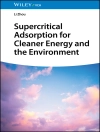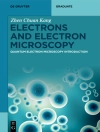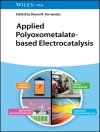Atoms and molecules in all states of matter are subject to continuous irregular movement. This process, referred to as diffusion, is among the most general and basic phenomena in nature and determines the performance of many technological processes.
This book provides an introduction to the fascinating world of diffusion in microporous solids. Jointly written by three well-known researchers in this field, it presents a coherent treatise, rather than a compilation of separate review articles, covering the theoretical fundamentals, molecular modeling, experimental observation and technical applications.
Based on the book Diffusion in Zeolites and other Microporous Solids, originally published in 1992, it illustrates the remarkable speed with which this field has developed since that time.
Specific topics include: new families of nanoporous materials, micro-imaging and single-particle tracking, direct monitoring of transient profiles by interference microscopy, single-file diffusion and new approaches to molecular modeling.
Table of Content
Volume 1
PART I: Introduction
ELEMENTARY PRINCIPLES OF DIFFUSION
Fundamental Definitions
Driving Force for Diffusion
Diffusional Resistances in Nanoporous Media
Experimental Methods
PART II: Theory
DIFFUSION AS A RANDOM WALK
Random Walk Model
Correlation Effects
Boundary Conditions
Macroscopic and Microscopic Diffusivities
Correlating Self-Diffusion and Diffusion with a Simple Jump Model
Anomalous Diffusion
DIFFUSION AND NON-EQUILIBRIUM THERMODYNAMICS
Generalized Forces and Fluxes
Self-Diffusion and Diffusive Transport
Generalized Maxwell –
Stefan Equations
Application of the Maxwell –
Stefan Model
Loading Dependence of Self- and Transport Diffusivities
Diffusion at High Loadings and in Liquid-Filled Pores
DIFFUSION MECHANISMS
Diffusion Regimes
Diffusion in Macro- and Mesopores
Activated Diffusion 99
Diffusion in More Open Micropore Systems
SINGLE-FILE DIFFUSION
Infinitely Extended Single-File Systems
Finite Single-File Systems
Experimental Evidence
SORPTION KINETICS
Resistances to Mass and Heat Transfer
Mathematical Modeling of Sorption Kinetics
Sorption Kinetics for Binary Mixtures
PART III: Molecular Modeling
CONSTRUCTING MOLECULAR MODELS AND SAMPLING EQUILIBRIUM PROBABILITY DISTRIBUTIONS
Models and Force Fields for Zeolite –
Sorbate Systems
Monte Carlo Simulation Methods
Free Energy Methods for Sorption Equilibria
Coarse-Graining and Potentials of Mean Force
MOLECULAR DYNAMICS SIMULATIONS
Statistical Mechanics of Diffusion
Equilibrium Molecular Dynamics Simulations
Non-Equilibrium Molecular Dynamics Simulations
INFREQUENT EVENT TECHNIQUES FOR SIMULATING DIFFUSION IN MICROPOROUS SOLIDS
Statistical Mechanics of Infrequent Events
Tracking Temporal Evolution in a Network of States
Example Applications of Infrequent Event Analysis and Kinetic Monte Carlo for the Prediction of Diffusivities in Zeolites
PART IV: Measurement Methods
MEASUREMENT OF ELEMENTARY DIFFUSION PROCESSES
NMR Spectroscopy
Diffusion Measurements by Neutron Scattering
Diffusion Measurements by Light Scattering
DIFFUSION MEASUREMENT BY MONITORING MOLECULAR DISPLACEMENT
Pulsed Field Gradient (PFG) NMR: Principle of Measurement
The Complete Evidence of PFG NMR
Experimental Conditions, Limitations, and Options for PFG NMR Diffusion Measurement
Different Regimes of PFG NMR Diffusion Measurement
Experimental Tests of Consistency
Single-Molecule Observation
IMAGING OF TRANSIENT CONCENTRATION PROFILES
Different Options of Observation
Monitoring Intracrystalline Concentration Profiles by IR and Interference Microscopy
New Options for Experimental Studies
DIRECT MACROSCOPIC MEASUREMENT OF SORPTION AND TRACER EXCHANGE RATES
Gravimetric Methods
Piezometric Method 433
Macro FTIR Sorption Rate Measurements
Rapid Recirculation Systems
Differential Adsorption Bed 441
Analysis of Transient Uptake Rate Data
Tracer Exchange Measurements
Frequency Response Measurements
CHROMATOGRAPHIC AND PERMEATION METHODS OF MEASURING INTRAPARTICLE DIFFUSION
Chromatographic Method
Deviations from the Simple Theory
Experimental Systems for Chromatographic Measurements
Analysis of Experimental Data
Variants of the Chromatographic Method
Chromatography with Two Adsorbable Components
Zero-Length Column (ZLC) Method
TAP System
Membrane Permeation Measurements
Volume 2
PART V: Diffusion in Selected Systems
AMORPHOUS MATERIALS AND EXTRACRYSTALLINE (MESO/MACRO) PORES
Diffusion in Amorphous Microporous Materials
Effective Diffusivity
Diffusion in Ordered Mesopores
Surface Diffusion
Diffusion in Liquid-Filled Pores
Diffusion in Hierarchical Pore Systems
Diffusion in Beds of Particles and Composite Particles
More Complex Behavior: Presence of a Condensed Phase
EIGHT-RING ZEOLITES
Eight-Ring Zeolite Structures
Diffusion in Cation-Free Eight-Ring Structures
Diffusion in 4A Zeolite
Diffusion in 5A Zeolite
General Patterns of Behavior in Type A Zeolites
Window Blocking
Variation of Diffusivity with Carbon Number
Diffusion of Water Vapor in LTA Zeolites
Deactivation, Regeneration, and Hydrothermal Effects
Anisotropic Diffusion in CHA
Concluding Remarks
17 LARGE PORE (12-RING) ZEOLITES
Structure of X and Y Zeolites
Diffusion of Saturated Hydrocarbons
Diffusion of Unsaturated and Aromatic Hydrocarbons In Na X
Other Systems
PFG NMR Diffusion Measurements with Different Probe Nuclei
Self-diffusion in Multicomponent Systems
MEDIUM-PORE (TEN-RING) ZEOLITES
MFI Crystal Structure
Diffusion of Saturated Hydrocarbons
Diffusion of Aromatic Hydrocarbons
Adsorption from the Liquid Phase
Microscale Studies of other Guest Molecules
Surface Resistance and Internal Barriers
Diffusion Anisotropy
Diffusion in a Mixed Adsorbed Phase
Guest Diffusion in Ferrierite
METAL ORGANIC FRAMEWORKS (MOFS)
A New Class of Porous Solids
MOF-5 and HKUST-1: Diffusion in Pore Spaces with the Architecture of Zeolite LTA
Zeolitic Imidazolate Framework 8 (ZIF-8)
Pore Segments in Single-File Arrangement: Zn(tbip)
Breathing Effects: Diffusion in MIL-53
Surface Resistance
Concluding Remarks
PART VI: Selected Applications
ZEOLITE MEMBRANES
Zeolite Membrane Synthesis
Single-Component Permeation
Separation of Gas Mixtures
Modeling Permeation of Binary Mixtures
Membrane Characterization
Membrane Separation Processes
DIFFUSIONAL EFFECTS IN ZEOLITE CATALYSTS
Diffusion and Reaction in a Catalyst Particle
Determination of Intracrystalline Diffusivity from Measurements of Reaction Rate
Direct Measurement of Concentration Profiles during a Diffusion-Controlled Catalytic Reaction
Diffusional Restrictions in Zeolite Catalytic Processes
Coking of Zeolite Catalysts
About the author
Jorg Karger was educated at the University of Leipzig where, in 1994, he was appointed Professor of Experimental Physics and Head of the Department of Interface Physics. To promote the subject he organized a series of popular lectures with demonstration experiments that attracted considerable attention and even an entry in the Guinness Book of Records for the largest bicycle bell orchestra! He is the founding editor of the on-line journal/conference series Diffusion Fundamentals (2005) and co-author of the first edition of the present book (Wiley, New York, 1992). He has received the Gustav-Hertz Prize of the German Physical Society (1978), the Donald Breck Award of the International Zeolite Association (1986) and the Max Planck Research Award (1993). He was elected to the Saxonian Academy of Sciences in 2000.
Douglas Ruthven was educated at the University of Cambridge. He served as a professor of Chemical Engineering at the University of New Brunswick, Canada (1966 – 1995) and at the University of Maine (1995 – 2010) where he was Chair of the Chemical Engineering Department. In addition to the fi rst edition of the present book (Wiley, New York, 1992) he is the author of Principles of Adsorption and Adsorption Processes (John Wiley, New York, 1984), co-author of Pressure Swing Adsorption (Wiley-VCH, New York, 1994). His awards include the Max Planck Research Award (1993), a Century of Achievement Award from the Canadian Society for Chemical Engineering (1997) and a Humboldt Senior Fellowship (2002). He was elected a Fellow of the Royal Society of Canada in 1989.
Doros Theodorou is Professor of Chemical Engineering at the National Technical University of Athens. After obtaining his Diploma at NTU Athens and his M.S. (1983) and Ph D (1985) from M.I.T., he taught for nine years at the University of California, Berkeley, resigning as full professor to return to Greece in 1995. He was among the first to exploit the power of numerical simulation to study adsorption kinetics and equilibria. His recent research has focused on the development and application of new, hierarchical computational methods for understanding and predicting the properties of materials from their chemical constitution. His work has been recognized by a Presidential Young Investigator award from the National Science Foundation (USA) (1988 – 1992), the 1996 Bodossakis Award for Chemistry, and the Danckwerts Lectureship (2006) awarded by the American Institute of Chemical Engineers. He is a member of the National Council of Research and Technology of Greece.












